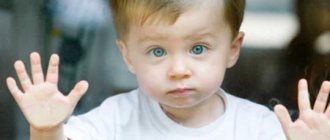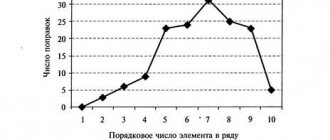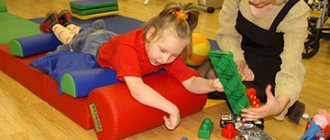If one were to choose one piece of advice that would help reduce the emotional stress of daily life or the pain of emotional trauma, it would be to not identify with one's thoughts. Sometimes a person’s subconscious is constantly fixed on the ideas that he is not good enough, that he will never achieve anything, that he does not deserve anything. These aimless negative monologues lead many people to depression and anxiety. Chronic stress has become a real epidemic in modern society. Anyone can face this problem. To take care of yourself and your loved ones, learn what emotional trauma is and how it can manifest itself.
What it is?
Psychological trauma in childhood is the result of an increased stressful influence, exorbitant for the possibility of protective mechanisms of the nervous system of children, which was expressed under certain life circumstances in their adulthood.
When injured, the baby loses the sense of comfort and security that surrounds him. They are replaced by a feeling of fear, powerlessness, weakness in the face of the uncertainty and changeability of the entire external environment: what in the recent past provided calmness and determination, today brings suffering and torment. These children, who live in stressful conditions, are often considered a risk group; they are more exposed to the negative influence of the outside world.
Traumatic experiences are not always physiological in nature. Its main aspects are power and richness, which initiate an emotional reaction in a person. The stronger the negative impact of the situation, the greater the likelihood of injury.
But not every unpleasant circumstance can cause damage to psychological well-being. To do this, it must be significant and meaningful for children. The negative impact of a situation (events, people), reinforced by weight and importance, is dangerous. Their intense repetitions can turn healthy children into neurotically unhealthy adults.
Alcohol or drug addiction
There are a number of studies demonstrating a connection between traumatic experiences and the abuse of a variety of substances. According to experts, people who experienced trauma in childhood have a different brain structure - changes disrupt its functioning. This often leads to a variety of cognitive defects and psychiatric disorders. Remember that sometimes people manage to hide their addiction from others for quite a long time. Loved ones must be especially attentive to be able to react in time.

The couple's wedding didn't happen at the best time, but "it gave it a special meaning"
All men together: Stas Kostyushkin showed what he does with children in quarantine
Refreshing Green Frappuccino with Mint and Matcha Tea
Causes
It is not always easy to discover objective and unambiguous root causes of the formation of childhood psychological trauma in an adult, since a person has exclusively personal criteria for the interpretation and significance of any event. But we can say with complete confidence that the negative influence of the surrounding world has a much greater impact on the fragile nervous system of a young child. Actions perceived by an adult as a nonsense and solvable problem can turn out to be a big disaster for a child.
The only fair criterion for assessing the negative circumstances that have arisen in the lives of children is a combination of the following factors: the importance of the situation for the child and the strength of its psychological impact.
A psychotraumatic event is interpreted by the child’s psyche as something acutely significant. These phenomena cause children to worry for a long time and very much. These are the conditions due to which mental peace and psychological balance disappear. Overcoming them requires fundamental changes in actions and thinking.
Based on the results of countless studies, psychology experts have compiled a list of events that are particularly difficult for small children and schoolchildren to tolerate. Thus, childhood trauma may be due to the following factors:
- moral, physiological, sexual pressure;
- death of close relatives;
- own illness or illness of family members;
- the divorce of father and mother, the departure of one of the elders from the family;
- unexpected disruption of domestic relationships;
- sudden alienation of the parent from the baby;
- betrayal, lies, injustice on the part of a family member, friends and adults who are authoritative for children;
- disappointment, dissatisfaction due to unfulfilled expectations;
- education of elders leading an immoral lifestyle;
- an asocial atmosphere in the team and in the family in which the baby grows up;
- overprotection or lack of maternal attention;
- an oscillatory strategy for teaching the child, the lack of coordinated similar requirements for the child between the father and mother;
- quarrel with best friends not on their initiative;
- situations in which the child feels like an outcast of the company;
- conflicts in educational institutions;
- bad relationships, pressure from teachers;
- the excessive workload of children with extracurricular and academic work.
According to one version, the development of childhood psychotrauma is considered a frequent result of an erroneous child-rearing strategy. Unconstructive living standards of parents are inherited by the child. The baby takes over the formed directives related to the rules of life from his father and mother, while the weighted model of the destructive “laws of life” defined in the family is directly inherited.

Dissociation and loss of sensation
The human brain is amazing; after many thousands of years of evolution, it has learned to adapt to almost any conditions. People are achieving impressive results; they even managed to create a rocket and go to the Moon. Unfortunately for people suffering from emotional trauma, the brain's ability to adapt can be a source of problems. According to research, trauma often leads to a person feeling limited and characterized by complete apathy and isolation. Severe emotional experiences significantly impair a person’s ability to develop and grow intellectually; he becomes abstracted from the outside world. Even if the trauma did not occur in childhood, when the consequences are most destructive and obvious, it is possible that just such a manifestation of stress is possible - an adult can also disconnect from what is happening, and his personality will change.

Mercury retrograde from June 18 to July 12: how it will affect the zodiac signs
It's all genes: what the granddaughter of the beautiful Shura from “The Ballad of a Soldier” looks like
Nourishing and quick: while my husband goes to lunch, I prepare a potato roll with cheese
Symptoms
All kinds of outbursts of traumatic unrest are ordinary and natural, therefore, you should not reproach yourself for demonstrating emotions towards them. The response to a negative incident that caused damage to the nervous system is predictable. This is a normal response to an unusual situation.
What signs can be used to establish the fact of emotional trauma in childhood?
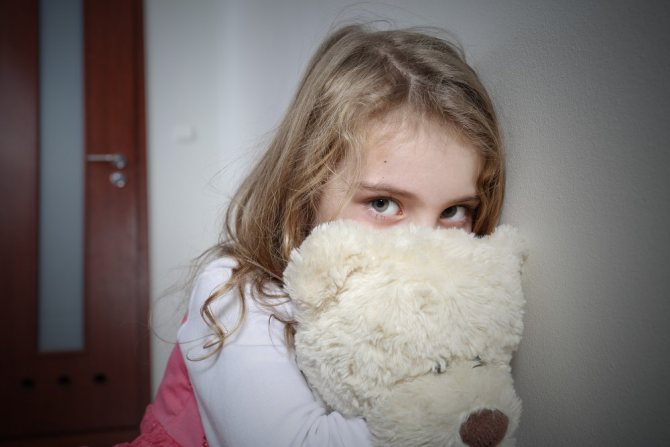
Hard Memories
Sometimes people who have experienced severe psychological trauma experience flashbacks of severe memories - they seem to be reliving the traumatic events. Unpleasant memories can come to mind due to the most ordinary everyday things. For example, a person who has experienced sexual assault may experience flashbacks when seeing someone who looks like the perpetrator.
If a person does not get the help they need, these flashbacks of difficult memories may only get worse. Fortunately, there are effective treatment options that can help a person better cope with anxiety, panic attacks, and distressing thoughts. For example, relaxation techniques, mindfulness and meditation practices. With the help of these techniques, victims of emotional trauma can regain hope for a comfortable life and cope with mental pain.

Psychological signs
Psychological symptoms:
- Shocked mood, depression, indifference, gloom, dejection. These symptoms can last for a long period without any apparent reason.
- Unreasonable jumps in emotional state, from gaiety to rage and irritation.
- Feeling of shame. Reproaching yourself, looking for reasons within yourself that led to negative results.
- Feeling of anxiety, horror. Fear is formed from insignificant to strongly expressed, mental phobias - fear of darkness, silence, deafening sounds, unknown strangers, large crowds of people, loneliness.
- Feelings of abandonment, uselessness, inferiority.

Physiological signs
Physiological signs:
- Nightmares, fears, asomnia.
- Increased heart rate, tachycardia.
- The appearance of diseases, in some cases without an existing prerequisite.
- Fatigue, constant exhaustion, weakness.
- Impaired attention to conversation and memory.
- Muscle tightness, tension.

Sleep problems
Sleep disorders, such as insomnia or sleepwalking, are quite common among trauma survivors, especially those with post-traumatic stress disorder. Nightmares are another common symptom, as are sleep talking and excessive sweating. Researchers attribute these problems to changes in brain chemistry. People who have experienced trauma have a different structure in the part of the brain responsible for the stress hormones adrenaline and cortisol. If a person ignores his condition, then his lack of sleep can become chronic, which will seriously undermine his health and reduce his quality of life.
Found a violation? Report content
When should you see a doctor?
There are many specialized psychological centers where you can turn for help throughout Russia. How to get rid of childhood psychological trauma on your own? This process is labor-intensive, but real. After childhood psychological trauma, the rehabilitation period can be long and difficult. And in some cases, traumatic consequences are forgotten quite quickly, and the adult personality remembers them only from time to time through unclear echoes, for example, in dream pictures. It depends both on the degree and depth of the reason itself that caused the injury, and on the individuality of the person.
A person’s own “painful” boundary also has an impact: in some cases, the fact that one person will not pay attention at all, for another it will be a shocking event. Since the most restless, suggestible people, introverts, choleric people and melancholic people, pay more intense and more painful attention to the situations in their lives than, for example, phlegmatic people and sanguine people.
However, if this period drags on and becomes too painful, it’s time to go to a professional or study the problem yourself. As psychological practice in relieving childhood trauma shows, there are certain aspects by which the need for intervention should be assessed:
- Romantic relationships are not going well, work activities are not going well, relationships at home are deteriorating, difficulties in communicating with friends, relatives, and employees.
- A persistent feeling of fear of intimacy. It is difficult to open your soul, to remain sincere and friendly. There is a constant fear that the person nearby will not live up to expectations, will certainly disappoint, or cause pain.
- A person becomes withdrawn in his own traumatic experiences, and in his thoughts returns to this experience again and again. Thoroughly weighs and experiences all the emotions of the events that caused emotional trauma.
- Somatic disorders may occur: difficulties with digestion, breathing, dreams, allergic pathologies. These signs are formed in the absence of a clear prerequisite, representing the body’s response to trauma acquired at an early age.
- A person begins to use alcohol and drugs in order to escape from reality, and uses other types of chemical and behavioral addiction.
Unfortunately, in most situations, the impact of childhood emotional trauma is long-lasting. And “recovery” is not easy and very painful. However, after some time the person “recovers.” The protective, compensatory mechanisms of the nervous system rehabilitate him, return him to being and allow him to enjoy life again. A competent specialist or a competent independent approach can help reduce this period and use it extremely effectively.
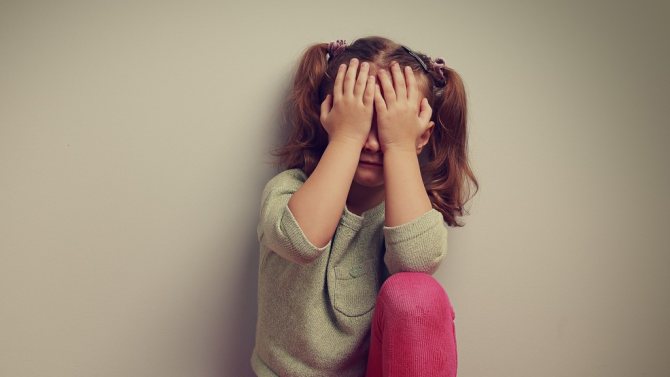
Developmental trauma and severe personality disorders
Research in recent years has shown that the etiology of borderline personality disorder in the narrow sense, multiple personality disorder, in which “the subject has several distinct and separate personalities, each of which determines the nature of behavior and attitudes over the period of time when it dominates” (G.I. Kaplan, B. J. Sadok, 1994, p. 453), can be traced in early childhood experiences of intense long-term violence, and the latter can be both physical (physical torture, sexual rape, presence during the commission of physical or sexual violence) and psychological.
For example, a situation in which a child finds himself in a family with addictive behavior, for example, in a family where one or both parents are alcoholics or drug addicts, can be classified as psychological violence. The mental status of the child is determined by the pattern of dependence on the compulsive behavior of the parents, which is formed as a consequence of the child’s attempts to find security, maintain his own identity and self-esteem. This pattern is called “co-dependence”.
The child, trying to take on the solution to family problems, denies his own needs. As a result, he becomes dependent on the needs, desires, hopes and fears of the family. Such conditions do not allow the child to feel safe, experience unconditional love, or behave spontaneously. In order to keep the adult's attention on himself, the child stops expressing his own needs and becomes co-dependent. Researchers call the result of this form of parental relationship the fragility and permeability of the boundaries of the self, devaluation of feelings (and loss of the ability to express them!) and impaired ability to establish emotional intimacy.
The phenomena of psychological violence include everything that destroys attachment relationships, or, on the contrary, forcibly fixes them: inadequate parental attitudes, emotional deprivation and symbiosis, humiliation and threats. The absence of parental love in infancy and adolescence contributes to the development of unquenchable emotional hunger and distorts the emerging image of the Self. Instability and “unreliability” of emotional relationships makes the perceptual, emotional-sensual image of the Other non-constant, “fluctuating” in the child’s perception from “totally bad” (rejecting and punishing) to “totally good” (loving and accepting) or forever becoming alien and potentially threatening.
In a situation of deprivation , a child who actively explores the world around him and feels the need for adult support discovers only emptiness, indifference, and uncertainty. Introjection of such patterns of destroyed emotional relationships leads to the formation of a wide range of psychopathologies, the central experiences of which are fears of loss, death, and emptiness.
Another form of inadequate parenting - emotional symbiosis - being an absolutely opposite pattern of relationships, leads to the same distortions of the self-image as deprivation. Symbiosis is an extreme form of interdependence associated with experiences of complete “merger” and “dissolution” in the Other, when the boundaries of the Self are lost. A participant in a symbiotic relationship has no need for his own individuality, so great is his desire to “drown” in the Other. The symbiotic relationship between mother and child is characterized by the absence and erasure of the boundaries between “I” and “my child” in the mind of the parent. However, if the child turns out to be “not like that,” “bad,” then the parent rejects this part of the Self, rejects it, being unable to accept the thought “I am bad, because part of me is bad.” At the same time, secondary, “cognitive” self-determination turns out to be difficult, since answering the question “Who am I?” is possible only by separating and distinguishing yourself and your boundaries from the Other. This type of relationship gives rise to impulsive extreme openness of boundaries and provokes any invasion of the Other - physical, sexual, psychological. The invasion itself, just as in the previous case, can be experienced not only as a violent act itself, but also as the desired filling of an intrapsychic “vacuum”, the acquisition of an object for fusion.
Thus, the most common forms of inadequate parental attitude - emotional deprivation and emotional symbiosis - not only have an extremely unfavorable effect on the emerging image of the Self and the child’s picture of the world, but also create a psychological basis, a special “perceptual readiness” for other forms of intrusion, in particular, physical and sexual.
As a result, a special personal organization is formed (namely, a borderline personality structure), characterized by a diffuse self-identity, a field-dependent cognitive style, the dependence of self-esteem on the assessments of significant others, etc., which has been proven by a number of empirical studies. The leading protective mechanism of the personality - splitting - allows the coexistence in the internal fabric of self-consciousness of the voices of the fragile, weak, dependent Self, and the aggressive, grandiose Self, and depending on external conditions, it can be actualized as the position of “victim”, “weak”, “small”, so is the position of the aggressor, “pursuer”, “executioner”.
This point of view echoes the position of modern psychoanalysis, which believes that the etiology of such a psychosexual disorder as sadomasochism is rooted in the experience of violence in childhood. The child introjects a pattern of “rapist-victim” relationships, which is fixed at the physiological level, so that basic needs can only be satisfied either by experiencing violence or by being raped [47].
Thus, the main types of distorted parental relationships - deprivation and symbiosis - form the basis for the formation of a victimized personal organization, which forces its owner to inflict other situations of violence on himself for the rest of his life.
J. Bowlby (1979), a well-known researcher of the phenomenon of maternal deprivation, introduces the term “pathogenic parenting” , defining it as a key etiological factor in neurotic symptoms, personality disorders, family and marital problems. J. Bowlby identifies the following types of inadequate parental attitudes:
1. Absence of a parent or separation of a child from a parent (when placed in a hospital, child care facility).
2. Lack of an adequate response to the search for care and affection, rejection of the child.
3. Threats to leave the child, used as a disciplinary measure (the parent threatens to deprive the child of his love, leave the family, commit suicide, etc.).
4. Provoking by the parent a feeling of guilt or experiencing his own “badness” in the child. (In this case, the child is subjected to exceptional criticism. An extreme option is to place responsibility on the child for the illness or death of one of the parents.).
5. Anxious attachment to the child associated with putting pressure on him. The parent (usually the mother) thus strives to become the only source of care in the child's environment.
Describing the harmful consequences of such parental attitudes, Bowlby Fr. The child’s own inner world, the boundaries of his body, and gender-role identity will also be diffuse, blurred, unclear, both in the case of symbiosis with the mother and in the case of rejection.
Thus, any situation of violence is unlikely to be accidental for the victim. It is more likely that it will be prepared by the entire previous history of the child’s life, and, above all, by the history of his child-parent relationships.
Rage, hatred and envy
O. Kernberg believes that almost from the very beginning of life there is the ability to express rage. The child’s rage primarily has a signaling function, indicating that something is not in agreement, the world is not in order, so to speak, and the mother must do something to remove the harmful element or even completely destroy it. Thus, rage is a signal of the need to eliminate a harmful stimulus, and later rage can become a signal that activates the destruction of a harmful object, and finally, from rage a chronic disposition can be formed to create a special introjected relationship with an object that causes rage in the child, which must be removed from his or her way at any cost. With such a connection, rage is projected onto external objects, which themselves begin to be viewed as ferocious, aggressive, sadistic, and as a result of this, a desire to destroy them appears. When the destruction of an object becomes the main motive for a child's constant rage, then we talk about hatred .
Thus, we consider hatred as a structured, constant, introjected relationship with an object, in which, on the one hand, we are talking about an attempt to destroy the object, on the other, about the desire to sacrifice something for it, to make the object suffer, in order to ultimately begin control it.
Thus, with hatred are associated the desire to destroy, cause suffering and exercise control over the object. If in destruction we encounter pure hatred and aggression, then when the feelings of hatred are mixed with the pleasure of inflicting pain on an object, then it is better to talk about sadism
or a sadistic attitude towards the object. Sadism is formed from hatred and is ultimately combined with the desire to control the object. Thus, the desire to destroy, vindictiveness, the sadistic desire to inflict suffering and control are the expression of hate-filled introjected relationships with objects.
We all, in principle, possess these qualities, since it is almost impossible to imagine that someone will be able to build their life in such a way that they will never feel at least a small degree of hatred towards an object that awakens hatred, which is usually kept within certain boundaries , or even sublimated. So we can hate our boss, hate what is contrary to our conscience, and we also hate criminals, who almost always cause reactions in us that indicate our great hatred. But in the case of severe personality disorders, hatred becomes one of the most powerful unconscious motives of the individual, and it is split off from the desire to love and from idealized ideas about objects. The tragedy is that clients who have been exposed to chronic aggression in early childhood tend to continually respond with hatred.
Feelings of envy : a special form of hatred that is formed in relation to an object that, on the one hand, is experienced as causing pain, evil, destructive and causing suffering, and on the other hand, has potentially good sides, and even causes love. In other words: envy is associated with the idea that a good object has, or has taken away, or is illegally detaining or concealing something that anyone else would like to have. This feeling, in a certain sense, is even more dangerous than hatred, since we envy what we ourselves desire and what prompts us to bite the hand that feeds us. This inability to allow dependence due to envy of what one needs leads to severe interpersonal conflicts and can lead to malignant narcissism or the formation of an antisocial personality.
We talk about malignant narcissism when the grandiose Self is thoroughly saturated with hatred, when antisocial and paranoid traits appear, aggression and sadism predominate. The most severe form is found in antisocial individuals,
which are characterized by severe pathology of the super-ego sphere, with a predominance of hatred in any interpersonal relationships, the inability to feel and express love, the dominance of hatred and envy towards other people (Kernberg. Aggression in Personality Disorders and Perversion. NY, 1992).
If we look at the hate-filled victim from a clinical point of view, we will notice that she is always confronted by a hate-filled criminal. There is a correlated, hate-filled relationship between the offender and the victim, with the hate-filled offender seeking to destroy the powerless object, inflict suffering on him and exert control over him. The existence of such an unconscious dyadic structure represents one of the main problems in working with these clients, since it immediately manifests itself in transference/countertransference.
A client who has experienced severe trauma in life, splitting off aggressive behavior into another area (reactions towards other people), “creates” a situation in which the therapist sees him only in the role of a victim.
How to help a child?
In order to prevent the formation of emotional trauma in children, the father and mother must have a decent level of teaching and general psychological knowledge, which can help choose an accurate strategy for teaching the child, not accompanied by destructive standards.
All the efforts of the father and mother must be focused on creating a comfortable basis for the development and formation of personality, providing any assistance in the child’s correct overcoming of emerging difficulties and problems.
There is no need to ignore the experiences of children, but to be a faithful assistant whom the child can trust without any hesitation or fear. Obvious changes in children's behavior should be a signal to parents of the need to show increased attention.
The slightest symptoms of the development of psychotrauma should be a pretext for contacting a psychologist to select together an adequate plan to restore mental balance in the child.
Today, specialized psychotherapeutic measures have been developed to help the child develop the opportunity to lead a full life, eliminate imposed barriers and eliminate the destructive standards of thinking that society has established.
In working with OSD and PTSD
- Get acquainted with various theoretical models and approaches to the study of acute and post-traumatic stress disorder;
- They will master the essence and quality of therapeutic presence and establishing contact with traumatized clients, which is the basis of psychotherapeutic work.
- They will study the theoretical foundations of psychodynamic somatic therapy for trauma, the mechanisms of connection between shock trauma and developmental trauma, get acquainted with the theoretical foundations of Gottfried Fischer’s psychotraumatology in relation to working with shock trauma, and consider the use of a process-oriented approach in working with shock trauma.
- Learn the principles and practice skills of working with acute and post-traumatic stress disorders
- Gain their own experience in building an individual resource platform
- They will receive their own deep healing experience of connecting mental, emotional and bodily experiences, as well as the opportunity to integrate deep transpersonal experiences into life.
How to work through childhood psychological trauma?
Usually people do not remember all the psychological and emotional traumas acquired at an early age. However, the question of how to free yourself from fears and internal discomfort still concerns you. Understanding that there is a problem is the first stage in overcoming emotional trauma. You can free yourself from childhood trauma by contacting a psychologist. An expert will be able to help you remember the situation that became a prerequisite for the injury. To overcome experiences, there are a large number of different methods; which one to use for a particular person will be chosen by a psychologist in accordance with personal character traits.
Chronic depression and anxiety
As mentioned, anxiety usually appears after a traumatic experience. This symptom often leads to the fact that a person simply cannot relax. He is constantly tense and suffers from hyperexcitability. If a person is experiencing depression, the symptoms may be similar. In addition, difficulty concentrating, irritability and nervousness may occur. Remember that you should never try to ignore depression - it is a serious problem that requires treatment.

Release technique
Today, special psychotherapeutic measures have been developed to help the child develop the opportunity to lead a full life, eliminate imposed barriers and eliminate the destructive standards of thinking that society has established.
The use of this technique looks like this: the doctor places a free chair in front of the patient and encourages him to imagine that the most important person for the client, for example, a father or mother, is sitting in it. You need to “communicate” with a fictitious interlocutor, talk about your own thoughts and emotions, or explain to him what you always wanted, but never did at an early age. The doctor is able to recommend “exchanging roles”, personally taking the role of a fictitious interlocutor.
Such activities may be particularly useful if people who have been significant in the past are unable or unwilling to contribute to the therapy. It can help reconnect with one's own experiences of the past and with those parts of one's personality that are hidden or suppressed by addiction or other destructive behavior. By connecting with emotions and memories, you can understand how they have a big impact on your current actions and realize how you can change the situation.
Introspection
You can cope with the results of injuries without the help of a specialist; for this you need to regularly monitor your own actions and behavioral reactions. Monitor your own emotions. Having identified the moment of the appearance of unpleasant pain or moral discomfort, try to recall and study the situation, it is best to come up with a positive outcome, and in your thoughts change the conditions that could lead to a different outcome. When practiced independently, this can help free oneself from childhood psychological trauma.
Anger
Anger can be a serious problem for a trauma victim. Trauma experienced in early childhood can make it difficult for a person to control their emotions. Angry outbursts are extremely common among victims of such circumstances. In addition, increased negative emotions may be associated with feelings of betrayal. This leads to aggressive behavior. If a person does not try to control their emotions, their behavior becomes self-destructive, making it increasingly difficult to resolve the situation.





